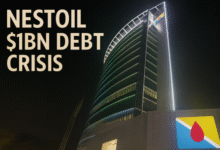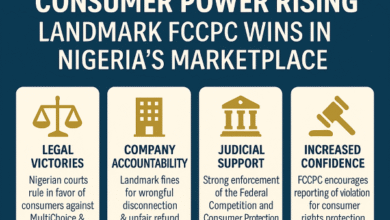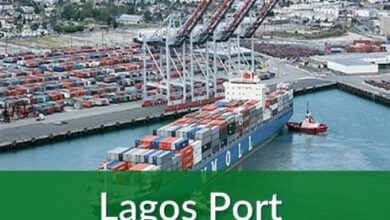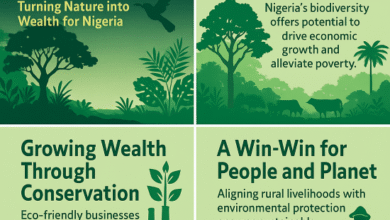Economic Diversification: Nigeria’s Non-Oil Export Hits $1.79 Billion in Q1 2025

In a fresh sign that Nigeria’s economic diversification agenda is finally gaining tangible traction, the Nigeria Export Promotion Council (NEPC) has announced that the country’s non-oil exports hit $1.791 billion in the first quarter of 2025, representing a 24.75% increase over the $1.436 billion recorded in the same period last year.
This significant surge, disclosed by NEPC Director-General Dr. Nonye Ayeni during the Council’s First Quarter Progress Report presentation in Abuja, marks a bold step forward in Nigeria’s longstanding but often stuttering journey to wean its economy off crude oil dependency.
Non-Oil Export Boom: Numbers That Tell the Story
More than just value, the volume of exported non-oil goods also experienced a dramatic increase — up by 243.44% from 1.937 million metric tonnes in Q1 2024 to 2.416 million metric tonnes in Q1 2025.
The report also highlighted:
- 197 distinct products exported in Q1 2025, up from 162 products in the same quarter of 2024 — demonstrating growing product diversification and sectoral participation.
- Export categories spanning agricultural commodities, industrial extracts, semi-processed inputs, and manufactured goods.
“This continued expansion is a reflection of deliberate policy alignment, export-led growth initiatives, and the increasing participation of Nigerian producers in global value chains,” Dr. Ayeni stated.
Cocoa, Urea, and Cashew Lead the Pack
Topping the list of exported commodities were:
- Cocoa and derivatives (butter, liquor, cake): 45.02% of total export value
- Urea/fertiliser: 19.32%
- Cashew nuts: 5.81%
Other top-performing products included Sesame seeds, Gold Dore, Aluminium ingots, Copper ingots, Rubber, and Soya beans/meal.
At the company level, Indorama Eleme Fertiliser and Chemicals Ltd and Starlink Global and Ideal Ltd retained their positions as Nigeria’s top exporters — contributing 12.07% and 10% respectively to total export value, largely driven by fertiliser and cocoa product exports.
Regional Penetration: West Africa Growing in Significance
Interestingly, intra-African trade saw strong improvements:
- Exports to ECOWAS countries hit $63.06 million, representing 3.52% of total export value — a 223% jump compared to Q1 2024.
- Exports to other African countries accounted for $32.73 million, about 1.83% of the total.
This expansion reflects Nigeria’s intent to better leverage AfCFTA (African Continental Free Trade Area) frameworks and build deeper trade linkages within the continent.
BRANDECONOMY Insight: The Real Signals Behind the Numbers
The significance of this Q1 2025 performance goes beyond percentages. Here’s what’s really unfolding:
- Export Diversification is Deepening: The product mix and volumes confirm a structural shift toward industrial and semi-processed goods — a crucial upgrade from Nigeria’s long-standing reliance on raw agricultural exports.
- Policy Alignment is Taking Root: The NEPC’s coordination with the Federal Ministry of Industry, Trade and Investment, alongside its implementation of the Export Expansion Facility Programme (EEFP), appears to be paying off, at least in early indicators.
- Private Sector Capacity is Expanding: With companies like Indorama and Starlink maintaining export dominance, there’s evidence that investments in export infrastructure, certification, and global market integration are bearing fruit.
- Cocoa’s Golden Moment: With global demand for cocoa at a high and prices rallying on commodity markets, Nigeria’s cocoa value chain is emerging as a strategic pillar in the non-oil export agenda. The same applies to urea/fertiliser, which is benefitting from high regional and global demand.
The Big Picture: Nigeria’s Non-Oil Future is Not a Mirage
For decades, Nigeria’s diversification agenda has been more aspirational than operational. But with non-oil exports rising year-on-year — from $4.517 billion in 2023 to $5.456 billion in 2024 — and now maintaining strong Q1 2025 momentum, the shift is becoming more sustainable.
However, challenges remain — including logistics bottlenecks, weak port efficiency, forex repatriation issues, and limited financing for exporters.
Yet, if sustained and scaled, this growth could position Nigeria as West Africa’s manufacturing and export engine, fulfilling the promise of the Renewed Hope Agenda and delivering more inclusive economic value.
The Bottom Line:
Nigeria’s Q1 2025 non-oil export performance is more than a quarterly win — it’s a turning point. For investors, policy makers, and business operators, the message is clear: the non-oil sector is no longer a sleeping giant. It’s awakening — and fast.











